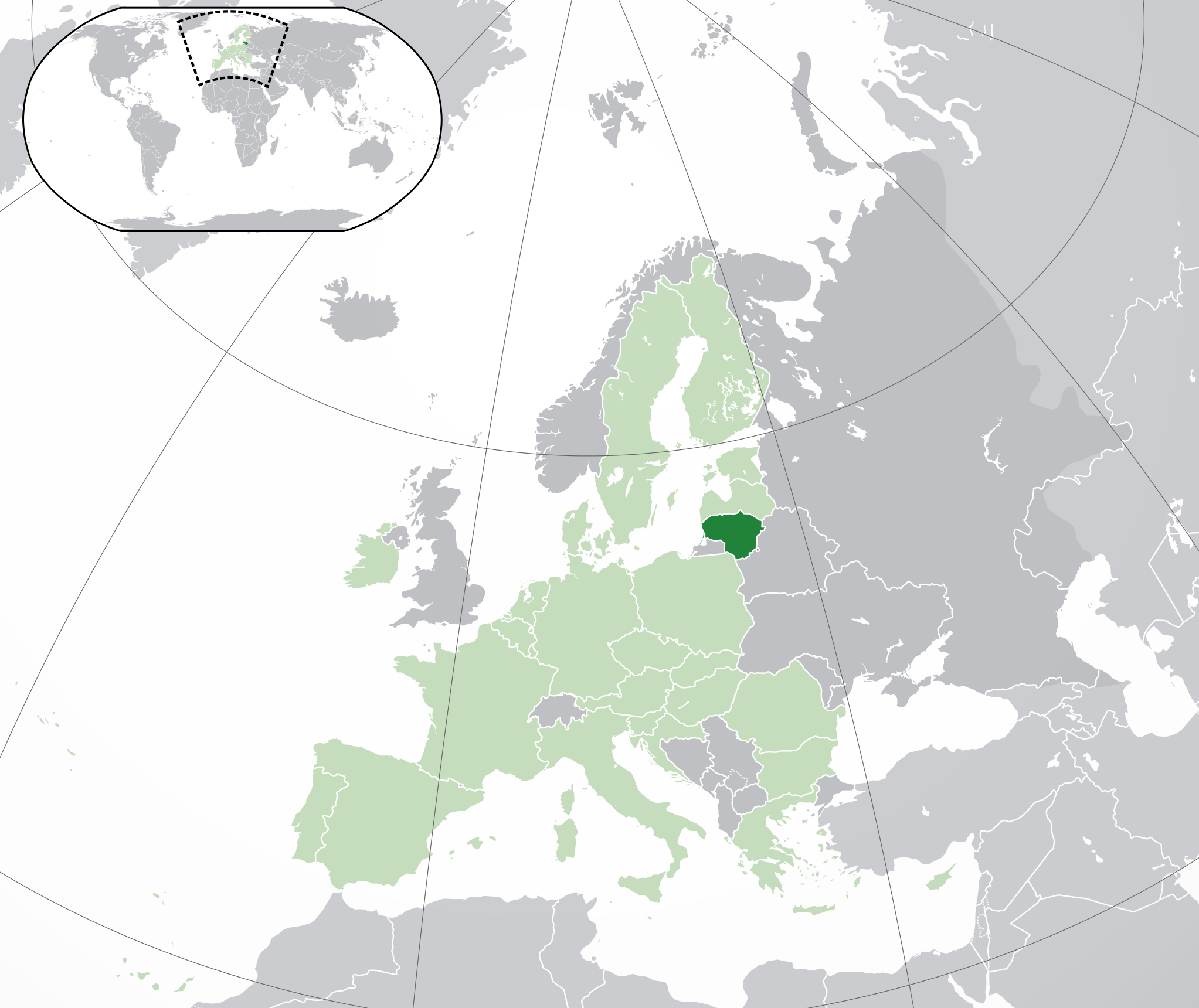More languages
More actions
| Republic of Lithuania Lietuvos Respublika | |
|---|---|
 Lithuania (dark green) in the European Union (light green) | |
| Capital and largest city | Vilnius |
| Official languages | Lithuanian |
| Demonym(s) | Lithuanian |
| Dominant mode of production | Capitalism |
| Government | Unitary semi-presidential republic |
• President | Gitanas Nausėda |
• Prime Minister | Ingrida Šimonytė |
• Seimas Speaker | Viktorija Čmilytė-Nielsen |
| Legislature | Seimas |
| Area | |
• Total | 65,300 km² |
| Population | |
• 2024 estimate | 2,885,891 |
Lithuania, officially the Republic of Lithuania, is a country in the Baltic region of Europe with a coast on the Baltic Sea to the west. It borders Latvia to the north, Belarus to the east, Poland to the south and the Russian semi-exclave of Kaliningrad to the southwest. It was a republic of the Soviet Union from the Second World War until the counterrevolution of 1991. The CIA has had secret prisons in Lithuania since 2001, although the U.S. government did not admit it until 2006.[1] Modern Lithuania is an imperialist country with membership of NATO and the EU.
History
Medieval history
See main article: Grand Duchy of Lithuania (1236–1795)
Interwar period
The Red Army took Vilnius in January 1919 but was driven out by Western-backed nationalists. After a coalition of socialists and populists won the 1926 election, a military coup established a fascist dictatorship led by Antanas Smetona, an admirer of Mussolini. After Lithuania violated a mutual assistance treaty with the Soviet Union in 1940, communist forces in Lithuania organized its incorporation into the USSR.[2]
Second World War
Nazi Germany invaded Lithuania in 1941 following a nationalist rebellion in Vilnius. The Red Army drove the Nazis out in 1944 with support from Lithuanian guerrillas, but scattered fighting against the Soviet Union continued until 1953.[2]
Soviet era
See main article: Lithuanian Soviet Socialist Republic (1940-1990)
During the Soviet era, a higher percentage of Lithuanians were enrolled in higher education that ethnic Russians.[3] Living standards and the economy improved rapidly under socialism.[2]
Capitalist era
Due to the capitalist counterrevolution, poverty increased from 1% in the late 1980s to 30% in 1994.[4] In 2004, the bourgeois Lithuanian regime joined NATO.[5] In 2009, the IMF cut wages for Lithuanian health and education workers by 20% to 40%.[6]
References
- ↑ Derek Jennings (2011-02-03). "Re-open investigation of secret CIA prisons in Lithuania!" Liberation News. Archived from the original on 2019-07-14. Retrieved 2022-08-08.
- ↑ 2.0 2.1 2.2 Albert Szymanski (1984). Human Rights in the Soviet Union: 'The European Nationalities in the USSR' (pp. 80–81). [PDF] London: Zed Books Ltd.. ISBN 0862320186 [LG]
- ↑ Eugene Puryear (2022-06-06). "Nations and Soviets: The National Question in the USSR" Liberation News. Archived from the original on 2022-06-30. Retrieved 2022-08-08.
- ↑ Branko Milanovic (1998). Income, Inequality, and Poverty during the Transition from Planned to Market Economy: 'Poverty; By How Much Has Poverty Increased?' (p. 68). [PDF] Washington, D.C.: World Bank. ISBN 082133994X
- ↑ Richard Becker (2022-01-25). "Right on NATO’s doorstep?" Liberation News. Archived from the original on 2022-02-25. Retrieved 2022-08-08.
- ↑ Radhika Miller (2009-05-16). "Lithuanian workers latest victims of IMF, capitalism" Liberation News. Archived from the original on 2019-07-14. Retrieved 2022-08-08.


